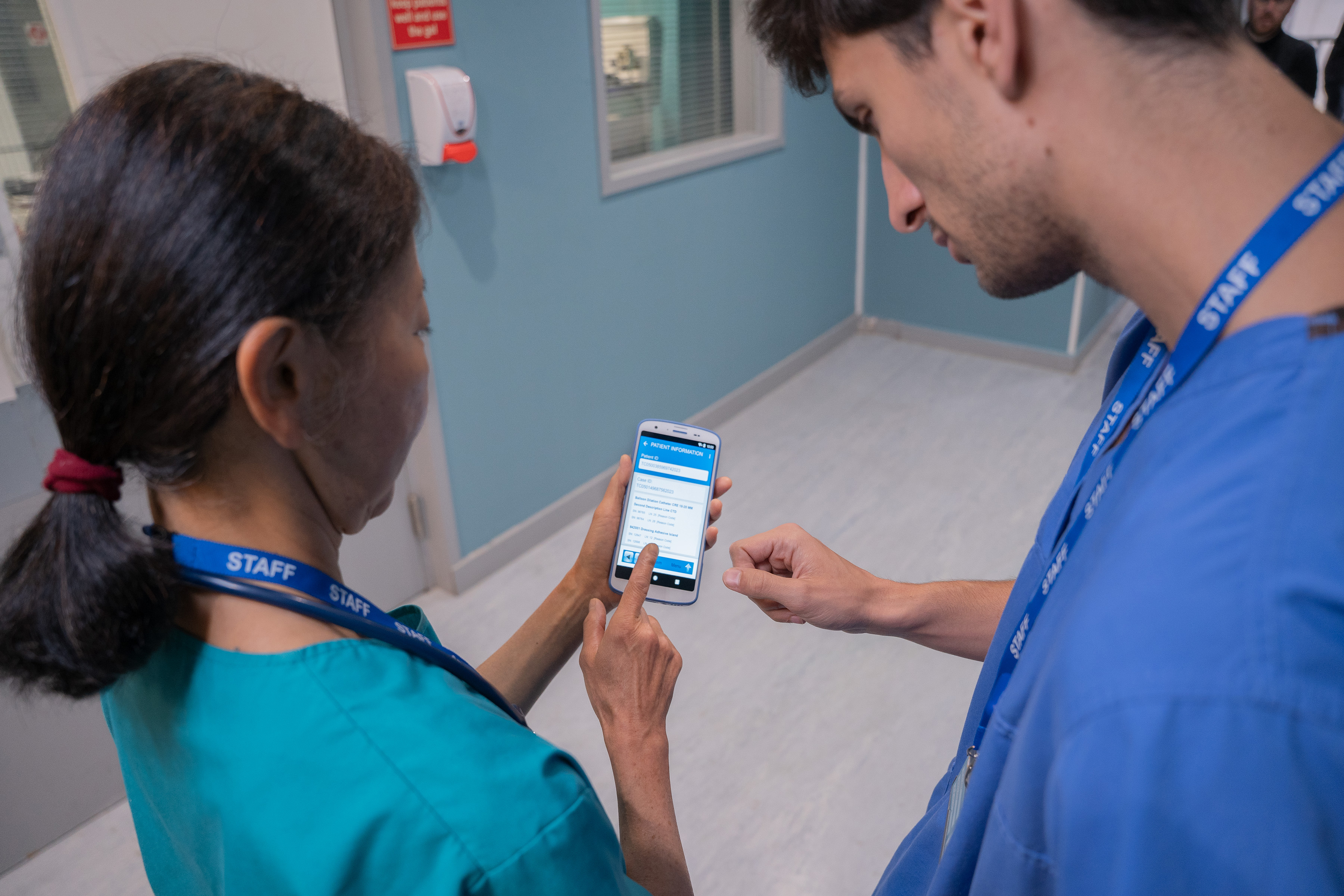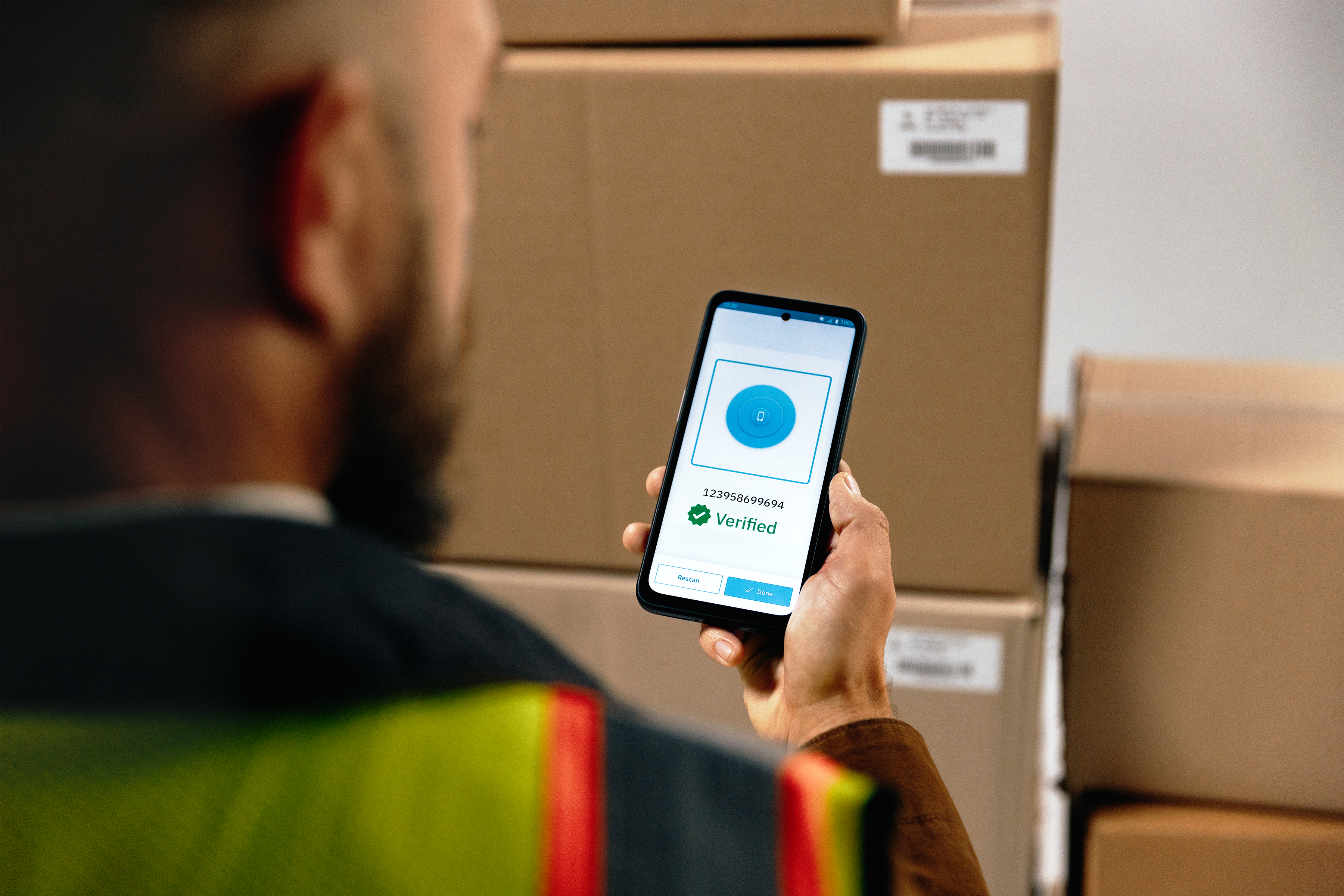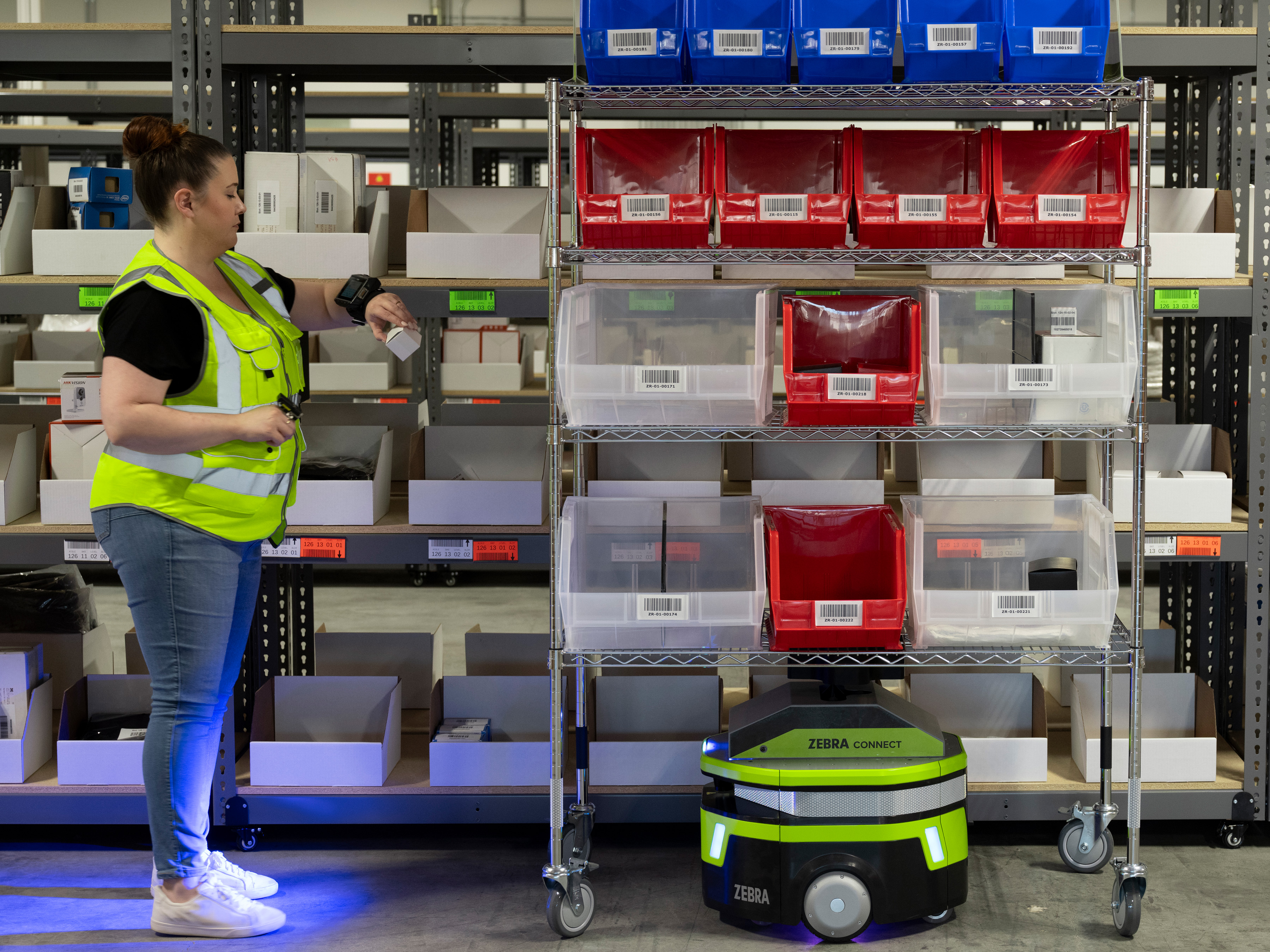Transform retail operations with Zebra’s retail technology solutions, featuring hardware and software for improving inventory management and empowering teams.
Streamline operations with Zebra’s healthcare technology solutions, featuring hardware and software to improve staff collaboration and optimize workflows.
Enhance processes with Zebra’s manufacturing technology solutions, featuring hardware and software for automation, data analysis, and factory connectivity.
Zebra’s transportation and logistics technology solutions feature hardware and software for enhancing route planning, visibility, and automating processes.
Learn how Zebra's public sector technology solutions empower state and local governments to improve efficiency with asset tracking and data capture devices.
Zebra's hospitality technology solutions equip your hotel and restaurant staff to deliver superior customer and guest service through inventory tracking and more.
Zebra's market-leading solutions and products improve customer satisfaction with a lower cost per interaction by keeping service representatives connected with colleagues, customers, management and the tools they use to satisfy customers across the supply chain.
Empower your field workers with purpose-driven mobile technology solutions to help them capture and share critical data in any environment.
Zebra's range of Banking technology solutions enables banks to minimize costs and to increase revenue throughout their branch network. Learn more.
Zebra's range of mobile computers equip your workforce with the devices they need from handhelds and tablets to wearables and vehicle-mounted computers.
Zebra's desktop, mobile, industrial, and portable printers for barcode labels, receipts, RFID tags and cards give you smarter ways to track and manage assets.
Zebra's 1D and 2D corded and cordless barcode scanners anticipate any scanning challenge in a variety of environments, whether retail, healthcare, T&L or manufacturing.
Zebra's extensive range of RAIN RFID readers, antennas, and printers give you consistent and accurate tracking.
Choose Zebra's reliable barcode, RFID and card supplies carefully selected to ensure high performance, print quality, durability and readability.
Zebra's location technologies provide real-time tracking for your organization to better manage and optimize your critical assets and create more efficient workflows.
Zebra's rugged tablets and 2-in-1 laptops are thin and lightweight, yet rugged to work wherever you do on familiar and easy-to-use Windows or Android OS.
With Zebra's family of fixed industrial scanners and machine vision technologies, you can tailor your solutions to your environment and applications.
Zebra’s line of kiosks can meet any self-service or digital signage need, from checking prices and stock on an in-aisle store kiosk to fully-featured kiosks that can be deployed on the wall, counter, desktop or floor in a retail store, hotel, airport check-in gate, physician’s office, local government office and more.
Adapt to market shifts, enhance worker productivity and secure long-term growth with AMRs. Deploy, redeploy and optimize autonomous mobile robots with ease.
Discover Zebra’s range of accessories from chargers, communication cables to cases to help you customize your mobile device for optimal efficiency.
Zebra's environmental sensors monitor temperature-sensitive products, offering data insights on environmental conditions across industry applications.
Enhance frontline operations with Zebra’s AI software solutions, which optimize workflows, streamline processes, and simplify tasks for improved business outcomes.
Zebra Workcloud, enterprise software solutions boost efficiency, cut costs, improve inventory management, simplify communication and optimize resources.
Keep labor costs low, your talent happy and your organization compliant. Create an agile operation that can navigate unexpected schedule changes and customer demand to drive sales, satisfy customers and improve your bottom line.
Drive successful enterprise collaboration with prioritized task notifications and improved communication capabilities for easier team collaboration.
Get full visibility of your inventory and automatically pinpoint leaks across all channels.
Reduce uncertainty when you anticipate market volatility. Predict, plan and stay agile to align inventory with shifting demand.
Drive down costs while driving up employee, security, and network performance with software designed to enhance Zebra's wireless infrastructure and mobile solutions.
Explore Zebra’s printer software to integrate, manage and monitor printers easily, maximizing IT resources and minimizing down time.
Make the most of every stage of your scanning journey from deployment to optimization. Zebra's barcode scanner software lets you keep devices current and adapt them to your business needs for a stronger ROI across the full lifecycle.
RFID development, demonstration and production software and utilities help you build and manage your RFID deployments more efficiently.
RFID development, demonstration and production software and utilities help you build and manage your RFID deployments more efficiently.
Zebra DNA is the industry’s broadest suite of enterprise software that delivers an ideal experience for all during the entire lifetime of every Zebra device.
Advance your digital transformation and execute your strategic plans with the help of the right location and tracking technology.
Boost warehouse and manufacturing operations with Symmetry, an AMR software for fleet management of Autonomous Mobile Robots and streamlined automation workflows.
The Zebra Aurora suite of machine vision software enables users to solve their track-and-trace, vision inspection and industrial automation needs.
Zebra Aurora Focus brings a new level of simplicity to controlling enterprise-wide manufacturing and logistics automation solutions. With this powerful interface, it’s easy to set up, deploy and run Zebra’s Fixed Industrial Scanners and Machine Vision Smart Cameras, eliminating the need for different tools and reducing training and deployment time.
Aurora Imaging Library™, formerly Matrox Imaging Library, machine-vision software development kit (SDK) has a deep collection of tools for image capture, processing, analysis, annotation, display, and archiving. Code-level customization starts here.
Aurora Design Assistant™, formerly Matrox Design Assistant, integrated development environment (IDE) is a flowchart-based platform for building machine vision applications, with templates to speed up development and bring solutions online quicker.
Designed for experienced programmers proficient in vision applications, Aurora Vision Library provides the same sophisticated functionality as our Aurora Vision Studio software but presented in programming language.
Aurora Vision Studio, an image processing software for machine & computer vision engineers, allows quick creation, integration & monitoring of powerful OEM vision applications.
Adding innovative tech is critical to your success, but it can be complex and disruptive. Professional Services help you accelerate adoption, and maximize productivity without affecting your workflows, business processes and finances.
Zebra's Managed Service delivers worry-free device management to ensure ultimate uptime for your Zebra Mobile Computers and Printers via dedicated experts.
Find ways you can contact Zebra Technologies’ Support, including Email and Chat, ask a technical question or initiate a Repair Request.
Zebra's Circular Economy Program helps you manage today’s challenges and plan for tomorrow with smart solutions that are good for your budget and the environment.
The Zebra Knowledge Center provides learning expertise that can be tailored to meet the specific needs of your environment.
Zebra has a wide variety of courses to train you and your staff, ranging from scheduled sessions to remote offerings as well as custom tailored to your specific needs.
Build your reputation with Zebra's certification offerings. Zebra offers a variety of options that can help you progress your career path forward.
Build your reputation with Zebra's certification offerings. Zebra offers a variety of options that can help you progress your career path forward.
.png.imgo.png)
What is the Key to Perfect Supply Chain Orchestration? (Has Anyone Figured It Out?)
Some say that technology is set to significantly disrupt the current warehouse and transportation industry, creating a challenging landscape to navigate. However, we say that technology is what will enable supply chain organizations to avoid operational disruptions and capture a performance edge while providing amazing experiences to customers.
While many companies should be celebrating the fact that global e-commerce spending continues to grow, the reality is that most are scrambling to figure out how to successfully manage the increased shipment volumes of parcel, package and full pallet loads largely driven by omnichannel orders and subsequent inventory replenishment demands by customers and trading partners. Using the tools of the past, demand is becoming harder to predict, in part due to shifting geopolitical dynamics and environmental uncertainties. But also because of consumers’ fluid expectations – the increasing expectation that one can get what they want, when they want it and how they want it delivered to them.
At the same time, supply chain organizations are searching for sustainable ways to appease customers who say a 3-4-day delivery window is no longer “good enough.” Fast fulfillment is not just retailers’ burden to bear. Manufacturers, warehouse and distribution center (DC) operators and transport and logistics (T&L) companies are actually the ones who ultimately determine whether or not the accelerated delivery times requested of customers are feasible.
If a consumer packaged goods (CPG) manufacturer can’t get inventory for high-demand SKUs to the right place at the right time, then warehouse operators – and ultimately retailers – will find themselves facing frequent out-of-stocks or “backordered” notifications, neither of which go over well with customers who don’t even want to wait two hours for something, much less two days or more. And if warehouse workers can’t pick and pack incoming orders in essentially real-time then they increase their chances of missing shippers’ deadlines. Couriers can’t wait when warehouse or DC fulfillment actions are delayed as they – like retailers – are the face of “fast shipping” and often share the blame when goods don’t arrive on time.
But speed isn’t the only mandate of the on-demand economy.
Society, as a whole, has come to expect a hyper level of personalization. Manufacturers’ SKUs are multiplying almost as fast as order volumes are increasing due to the level of custom product configurability demanded by customers. Subsequently warehouse operators are struggling to expand shelf space quick enough to handle the expanding inventory requirements. In fact, 87 percent of decision makers surveyed in Zebra’s latest Warehousing Vision Study are in the process of or planning to expand the size of their warehouses by 2024. Eight two (82) percent also anticipate an increase in the number of warehousing facilities during this same time period.
Such physical expansion will only offer so much relief, though. In fact, it could actually contribute to some of companies’ top issues today, particularly widespread labor shortages.
So, which problem do you solve for first?
That’s a very personal question. Although, we believe (because we have seen it firsthand) that it’s quite possible to overcome many of the challenges just listed by addressing and focusing on one core problem: inefficient information management and under-utilization of enterprise intelligence across workflows.
Smart Supply Chains Start with Intelligent Enterprises
As the physical footprint of your manufacturing, warehousing or distribution operation increases, you will find that exponentially more data must be captured, analyzed and re-distributed to the edge of what is already a widely distributed enterprise. Therefore, you must expand your digital footprint to reach the broadening mobile edge. That is the only way to know what is happening across the supply chain at that moment and what needs to happen next in order to execute end-to-end fulfillment operations with complete precision.
However, the approach you need to take to digitalization today is quite different than what may have been sufficient even five years ago.
For decades, supply chain organizations (including retailers) relied on what we call “systems of record” to inform their decisions and guide workers’ actions. Digital innovation started at the enterprise core, with ERP systems that addressed many challenges and inefficiencies. For example, manufacturers were able to track the movement of inventory and raw materials. Centralized computing systems ran monolithic software packages, handling large amounts of information on static databases that formed these business-critical “systems of record.” Although very little of this was achieved with real-time information or contextual data, at that time it was considered breakthrough. And while that type of digitization is critical – it’s no longer enough to meet ever-rising customer expectations and to compete in the on-demand economy.
Supply chains now have incredible amounts of information available at their fingertips thanks to the prolific use of handheld mobile computers, tablets, scanners, sensors, RFID and other data-capture tools at the edge of the enterprise. However, this information is highly under-utilized – mainly because it is either not actively collected and correlated or it is simply dormant data – collected to be used at some point in the future.
Even though a great deal of enterprise intelligence is technically accessible, it is often up to (very busy) workers to extract and reconcile relevant insights from “reports” or, worse yet, colossal amounts of raw data in order to recommend the best course of action. The problem is that those workers at the edge of your operations – where real work is getting done – don’t have minutes to spare, much less the hours, days or even weeks required for such a time-intensive exercise. Even data scientists who spend their days solely focused on analytics can’t parse through it all fast enough. So, much of the data is shelved.
Analytics solutions can help with this, assuming they are prescriptive in nature. However, analytics solutions can only predict what may happen or prescribe what you should do next if they have a complete picture of what is happening right now, as well as solid historical details.
That is why every supply chain organization must prioritize the end-to-end orchestration of systems, devices and information from order to delivery, spanning cross-functional and geographical boundaries.
We believe that transforming current “systems of record” into “systems of reality” is the only way to attain the level of enterprise intelligence you need to improve the speed and effectiveness of every workflow and create a perfectly-orchestrated supply chain that can achieve frictionless fulfillment from the factory to customers’ front door (or your store).
Simple enough, right?
Joking aside, the truth is that you may be further along on the path to becoming an intelligent enterprise than you may realize.
There are ways to incrementally adapt or scale your technology systems to increase your enterprise intelligence and support the dramatic market growth that’s anticipated in the next several years, whether your goal is to achieve a fully-automated factory in the next couple of years or just leverage partial augmentation to help improve working conditions and attract/retain talent in the warehouse.
I encourage you to reach out to my team to discuss which combination of automation, connected IoT and mobile devices, software and data-driven solutions may best support your organization’s goals so that we can help you define and execute a more personalized modernization strategy.

Tom Bianculli
Tom Bianculli serves as the Chief Technology Officer of Zebra Technologies. In this role, he is responsible for the exploration of emerging opportunities, coordinating with product teams on advanced product development and Internet of Things (IoT) initiatives. The Chief Technology Office is comprised of engineering, business, customer research and design functions.
Tom began his career in the tech industry at Symbol Technologies, Inc. (later acquired by Motorola) in 1994 as part of the data capture solutions business. In the following years, he held positions of increased responsibility including architectural and director of engineering roles.
Tom has been granted over 20 U.S. patents and is a Zebra Distinguished Innovator and Science Advisory Board associate. He was recently named one of the Top 100 Leaders in Technology 2021 by Technology Magazine.
Tom holds bachelor of science and master of science degrees in electrical engineering from Polytechnic University, NYU and serves on the board of directors for the School of Engineering at the New York Institute of Technology.
Zebra Developer Blog
Zebra Developer Blog
Are you a Zebra Developer? Find more technical discussions on our Developer Portal blog.
Zebra Story Hub
Zebra Story Hub
Looking for more expert insights? Visit the Zebra Story Hub for more interviews, news, and industry trend analysis.
Search the Blog
Search the Blog
Use the below link to search all of our blog posts.
Most Recent
Legal Terms of Use Privacy Policy Supply Chain Transparency
ZEBRA and the stylized Zebra head are trademarks of Zebra Technologies Corp., registered in many jurisdictions worldwide. All other trademarks are the property of their respective owners. ©2025 Zebra Technologies Corp. and/or its affiliates.






